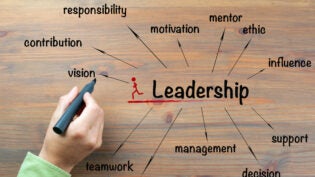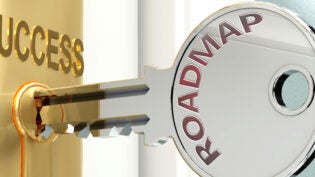
A project manager will be expected to undertake a significant amount of training to gain professional qualifications during the course of their career. In truth, they never really finish learning as there are always new methods and ways of thinking coming to the fore. These are things that can really help them not only to be a better project manager but also put together a better project team – one that will be more successful at delivering projects.
It wasn’t long ago that the ideal of being more inclusive was at the front of the way in which many organisations worked and this was followed by the need to be more diverse. What might have started out as a need to be seen to be employing a more diverse workforce has grown to the point where it is no longer an “inclusive” measure but rather one that has benefits to the organisation in question. A diverse and more inclusive workforce offers a wider range of different outlooks on the same problem, and the more people with different outlooks that consider a problem the more likely an innovative solution can be found.
Here we take a look at some best practices for project managers with regard to diversity and inclusion.
Ensure you create a sense of belonging for everyone
If you want each of your project team members to give their very best to each and every project that you undertake, then you really need to establish a sense of belonging. When employees feel that they have a connection to the organisation that they work for, or the group of people that they work with, it makes them feel like they can be truer to themselves and this not only means that you will have greater engagement within that team but also great creativity withing the workplace.
These changes are not, however, made overnight. They can take time. This means slowly introducing a wider diversity to your team and allowing this new set of ideas to become part of the way of thinking rather than suddenly expecting a completely new and random selection of employees to be able to gel. There is nothing wrong with adding new members to an older established team; this will give you a range of diversity linked to their experience of working together.
Be an empathetic leader
All too often, diversity and inclusion are seen as being something that is in the territory of the HR department. But if you are looking to effect real change on an individual basis, you, as a project manager, need to be on board with the idea of belonging, both on an emotional and intellectual level. The only way for diversity and inclusion to really thrive is for everyone to be on board.
Employees need to feel that you are there for them as project team leader, and this means you need to get in touch with your own empathy. At some point in life almost everyone has been excluded from something, whether it was a friendship group or being the last pick for a sports team. Use the lessons that that experience might have taught you and work with it to help become a more empathetic leader.
Quotas don’t mean inclusion
One very important consideration when hiring is to remember that quotas do not mean inclusion. Whilst it is true that hiring goals can help to boost your numbers in terms of diversity this will not automatically help you to create a more inclusive culture. If you focus on diversity to a greater extent than inclusion, then you are not considering the full employee experience.
If you want to attract top talent to your organisation, and more importantly retain them in the long term then it is important to take an open look at the complete employee experience. This will allow you to create the type of conditions that promote inclusion within the organisation on a day-to-day basis.
It is what you do once you have attracted the diversity to your organisation that matters. Once you have hired someone you need to make the effort with team building, mentoring, training and continuing professional development.
What needs to be considered is whether the environment that you have created within your organisation is one where every individual person can have their say and be heard, and where they get an opportunity to contribute their own unique take on the problems at hand. It is important to ensure that meetings are inclusive, that people are not left out who could have valuable input. Understanding how your team works best and what tensions might exist is just as important.
Inclusion is not a one-off task
Teaching employees about being inclusive is all very well but it isn’t a one-off task. In order for it to be truly successful you need to help them identify those key moments which can help to shape their future behaviours and provide them with better habits. These are the habits that they will take forward, that will allow for an environment where healthy tension, honest conversation and real change are the norm.
Identify change cohorts within your organisation, those who are not at a management or executive level. With the right skills and information they can help to champion change within their project team, their department or any other group they are involved in. This method is far more effective than individual tailor-made training sessions that are done on a one-off basis. These ideas need to become every day, part of the way people think and act.
Focus on individuals and not fit
Your team is made up of individuals with their own thoughts, ideas and ways of thinking. You don’t want new team members who simply fit into your current team and nod in the right places, agreeing with what others say. You want individuals who have their own opinions and will share them, opinions that may give you a new angle on the problem that you are looking at and that may just help you to find a successful solution that you may otherwise not have thought of.
4096 Views












